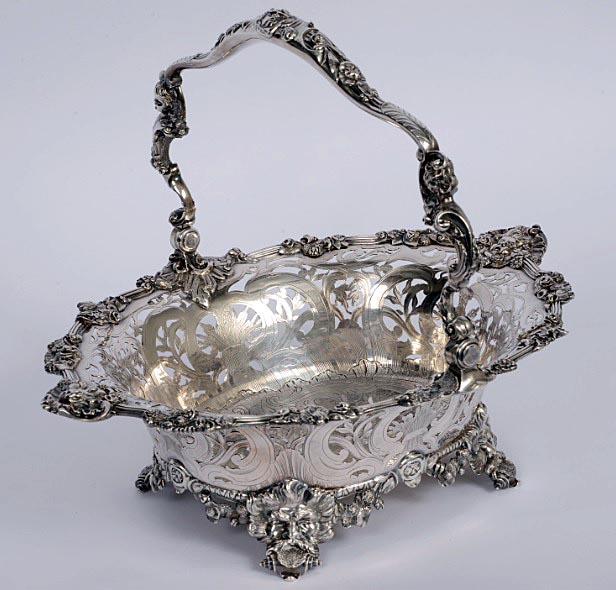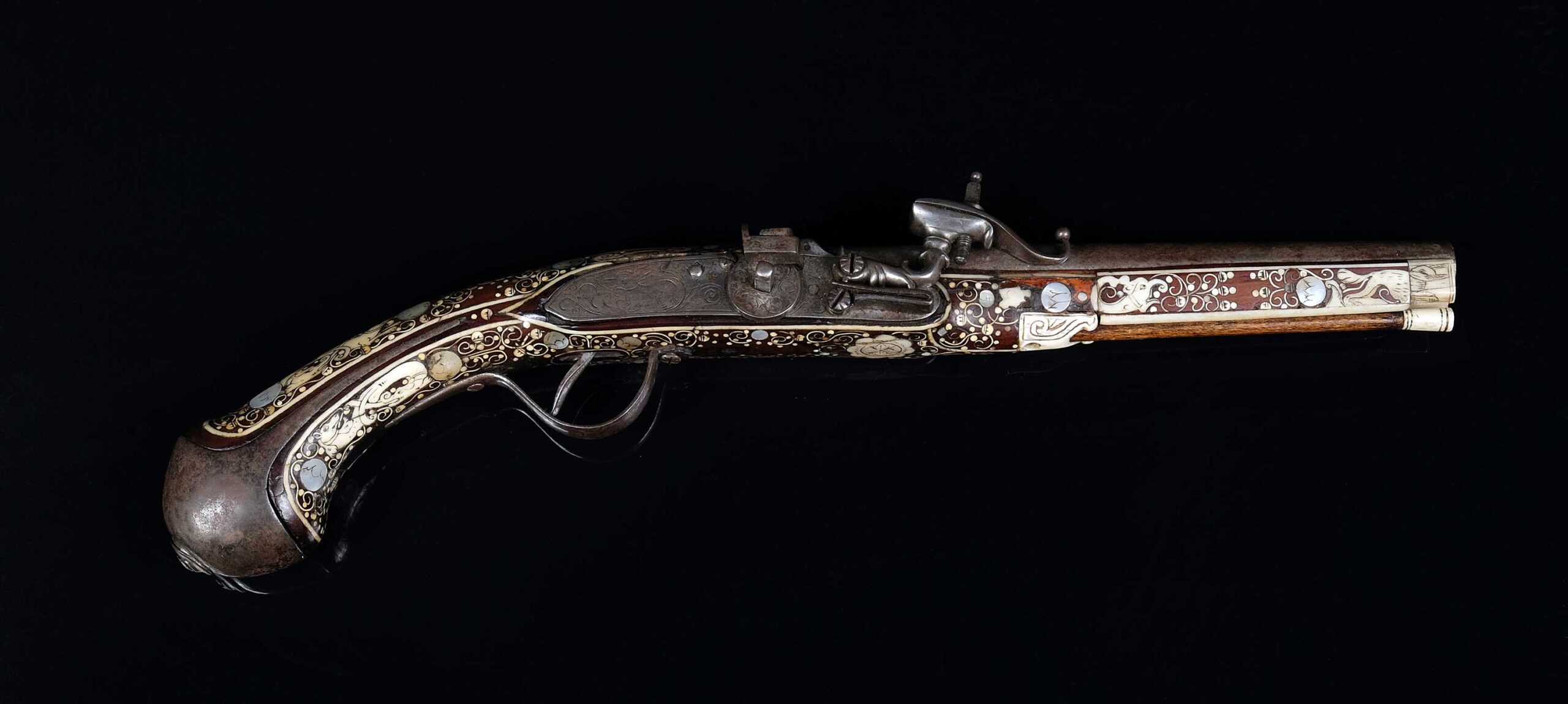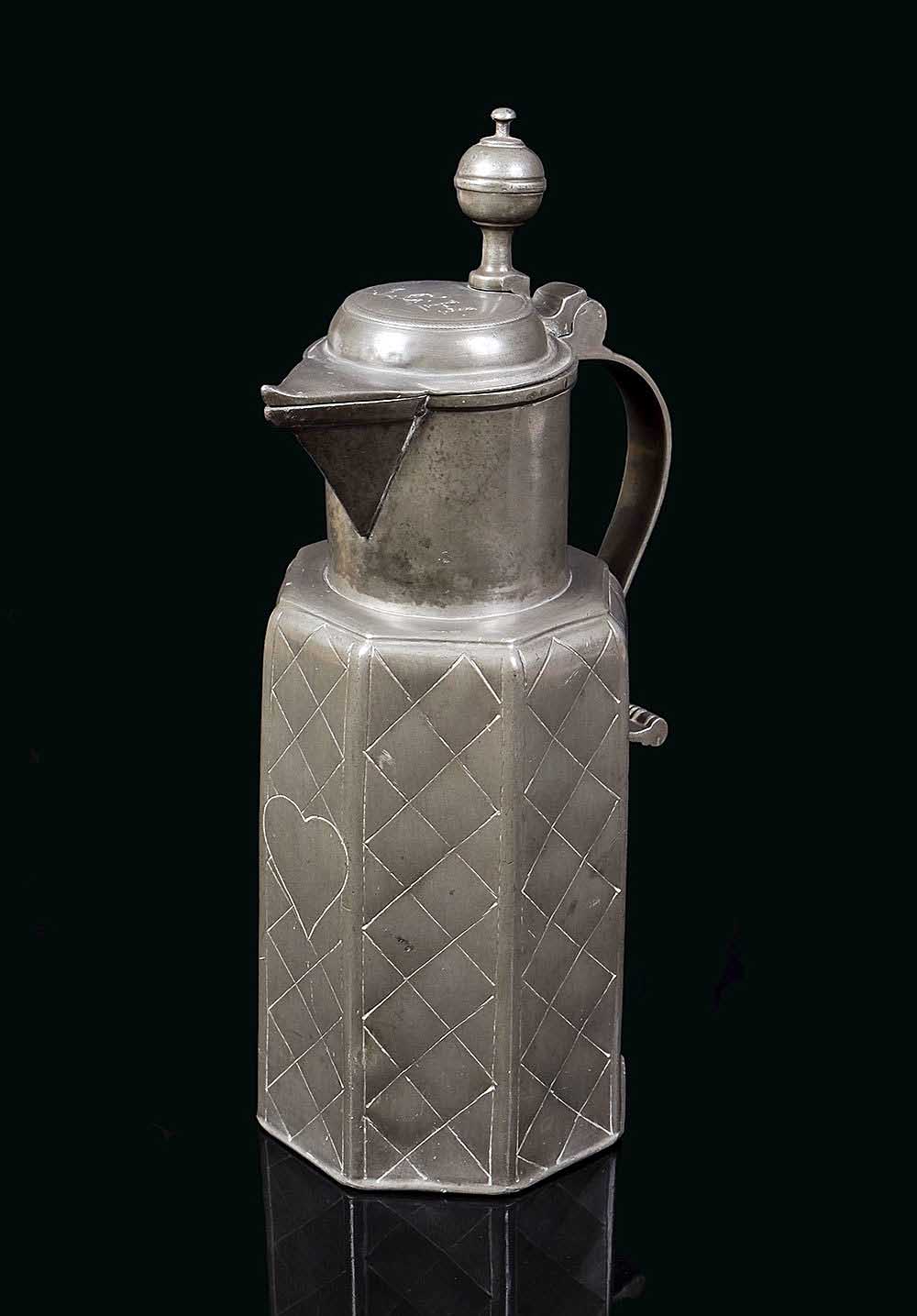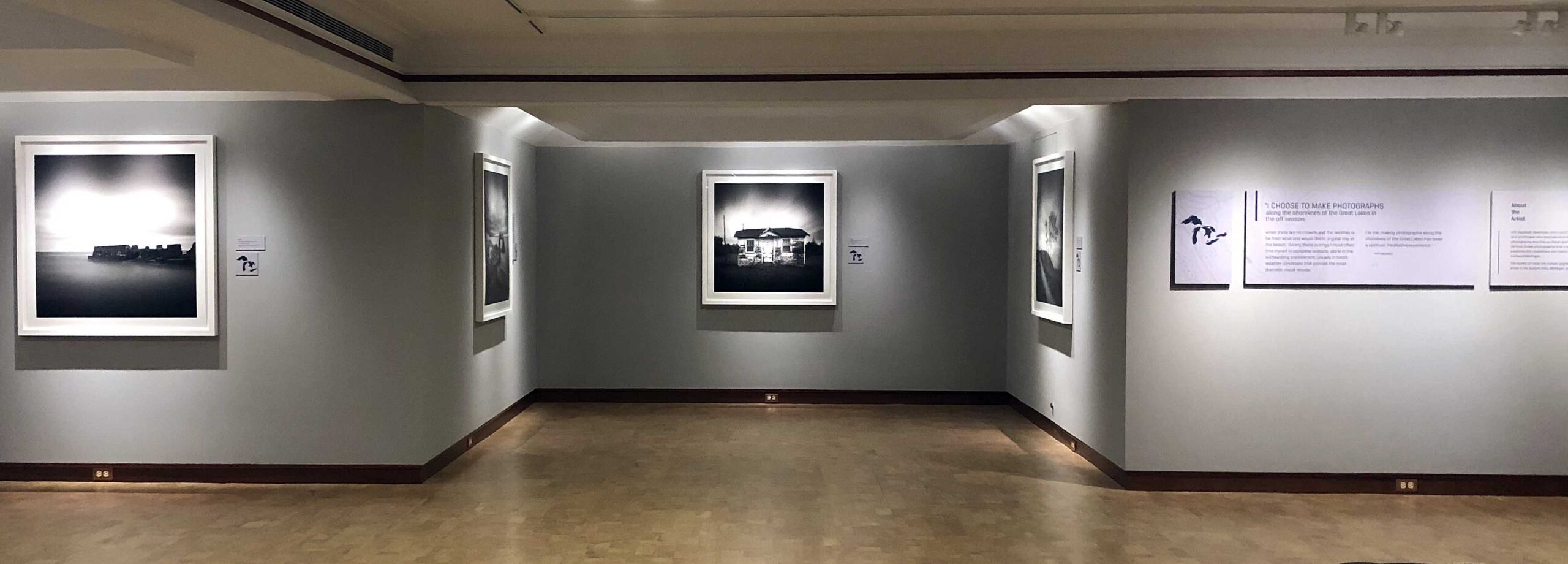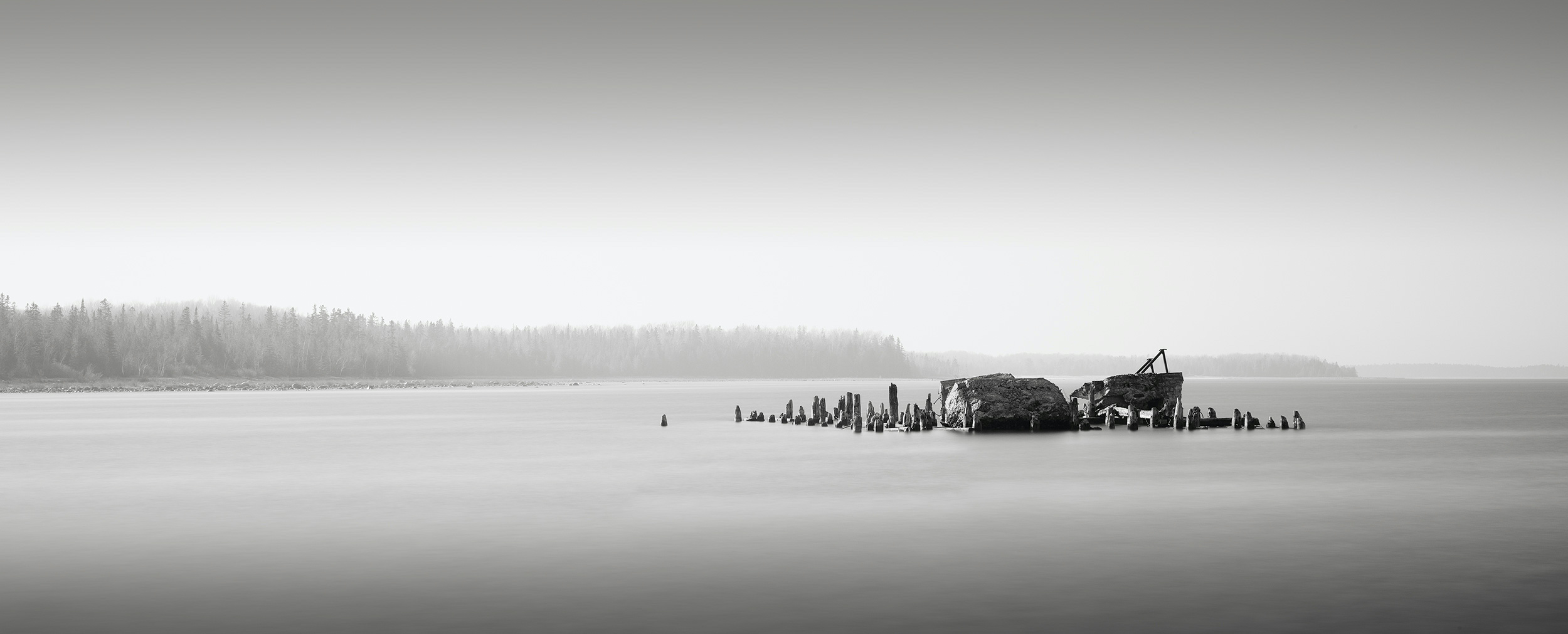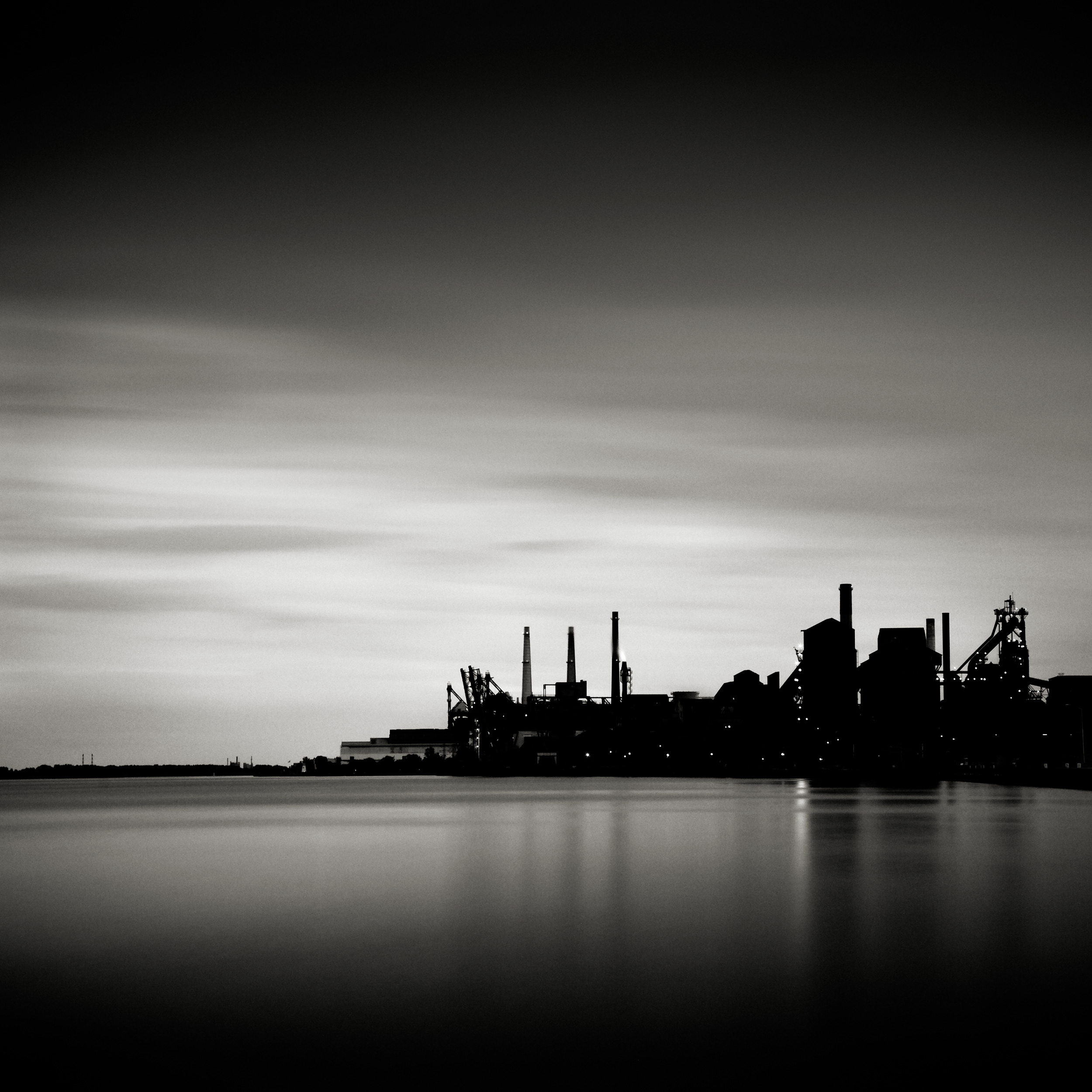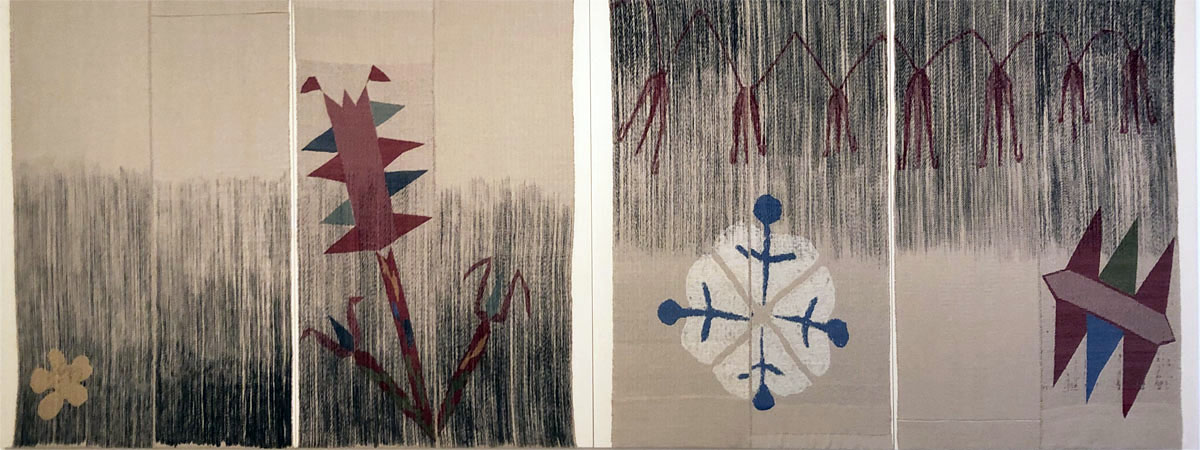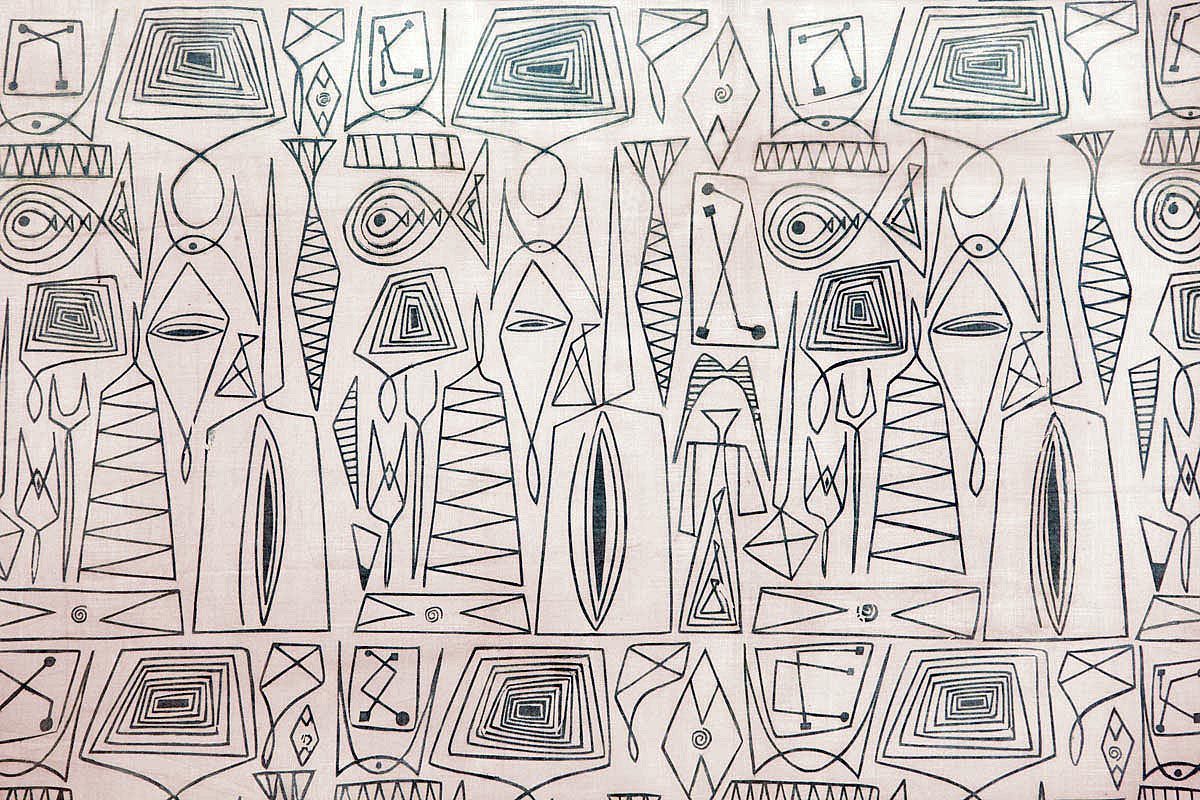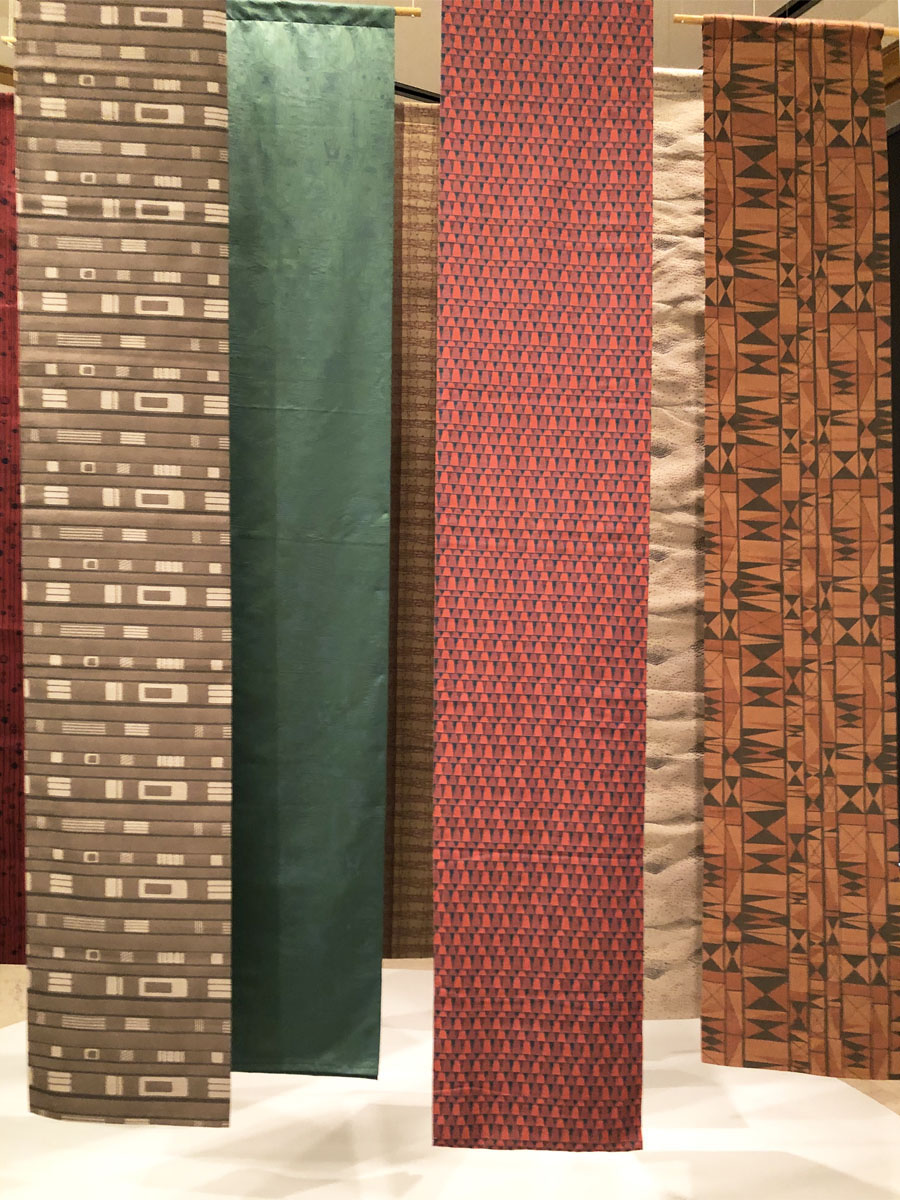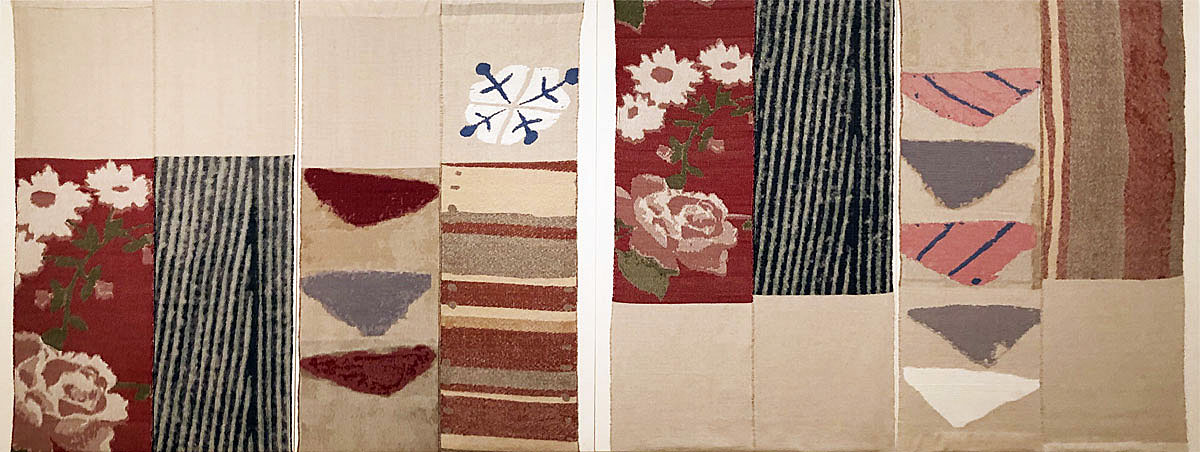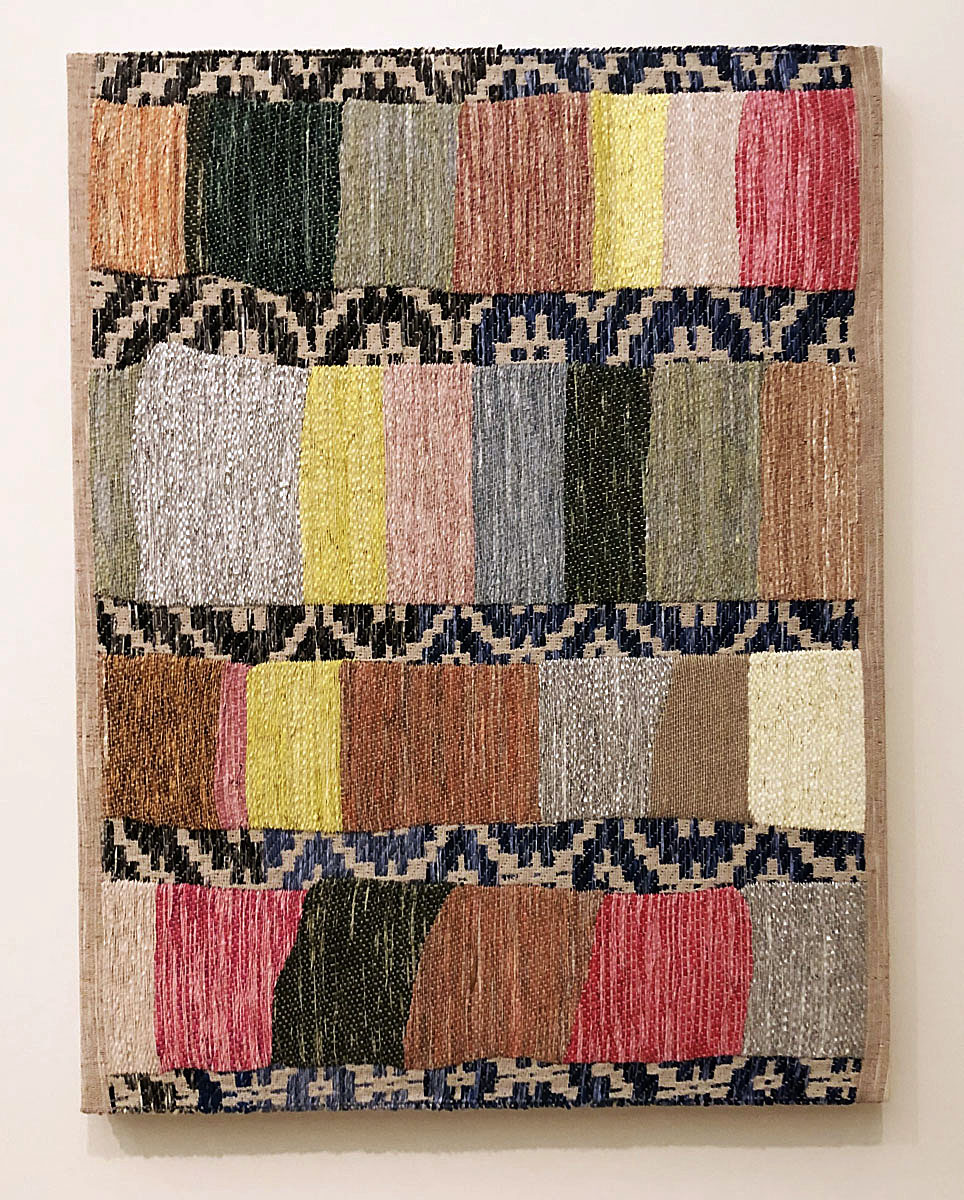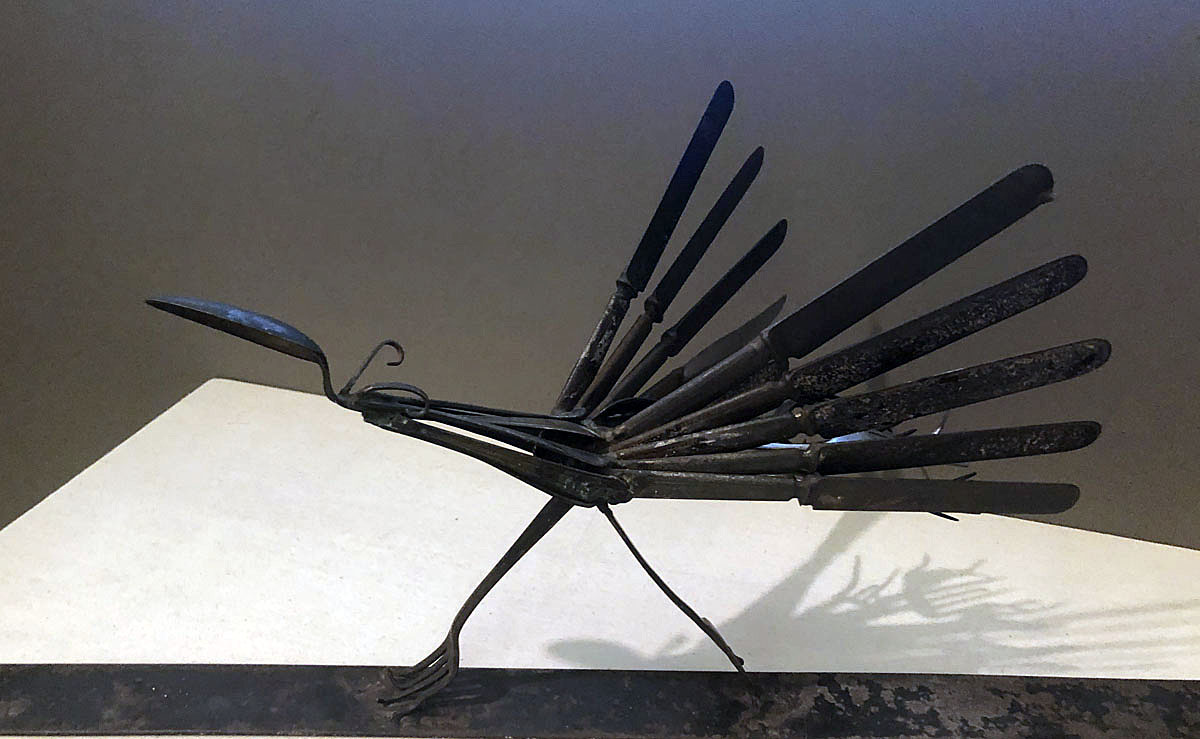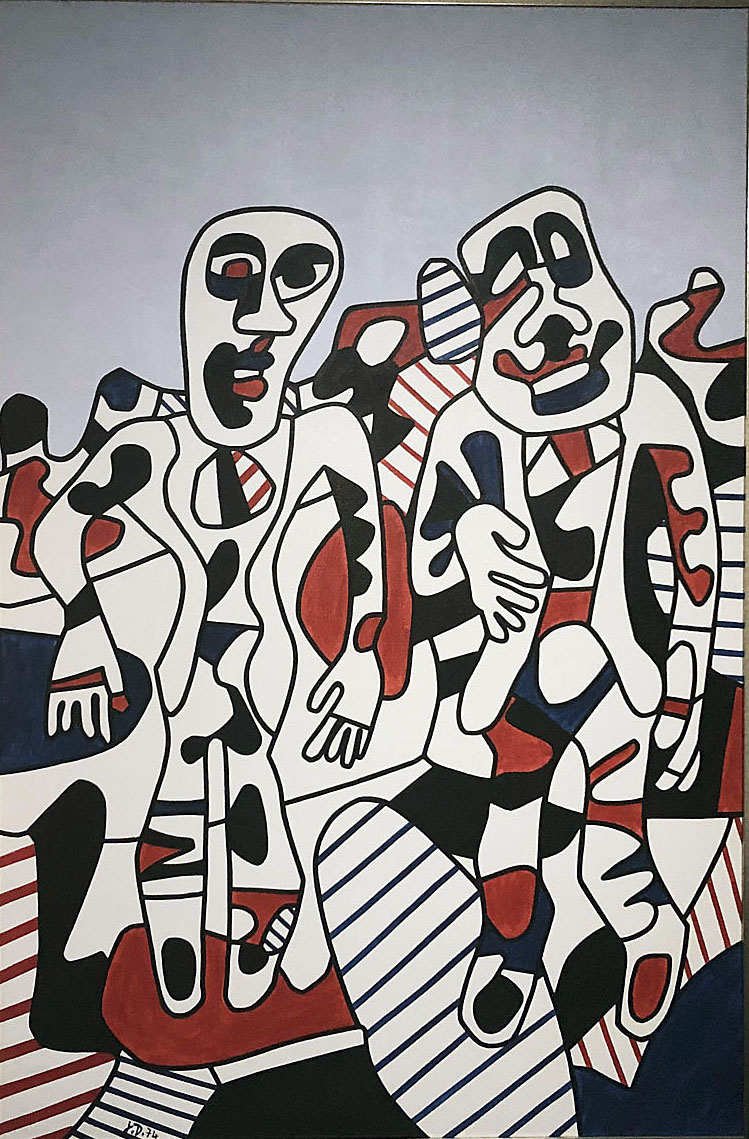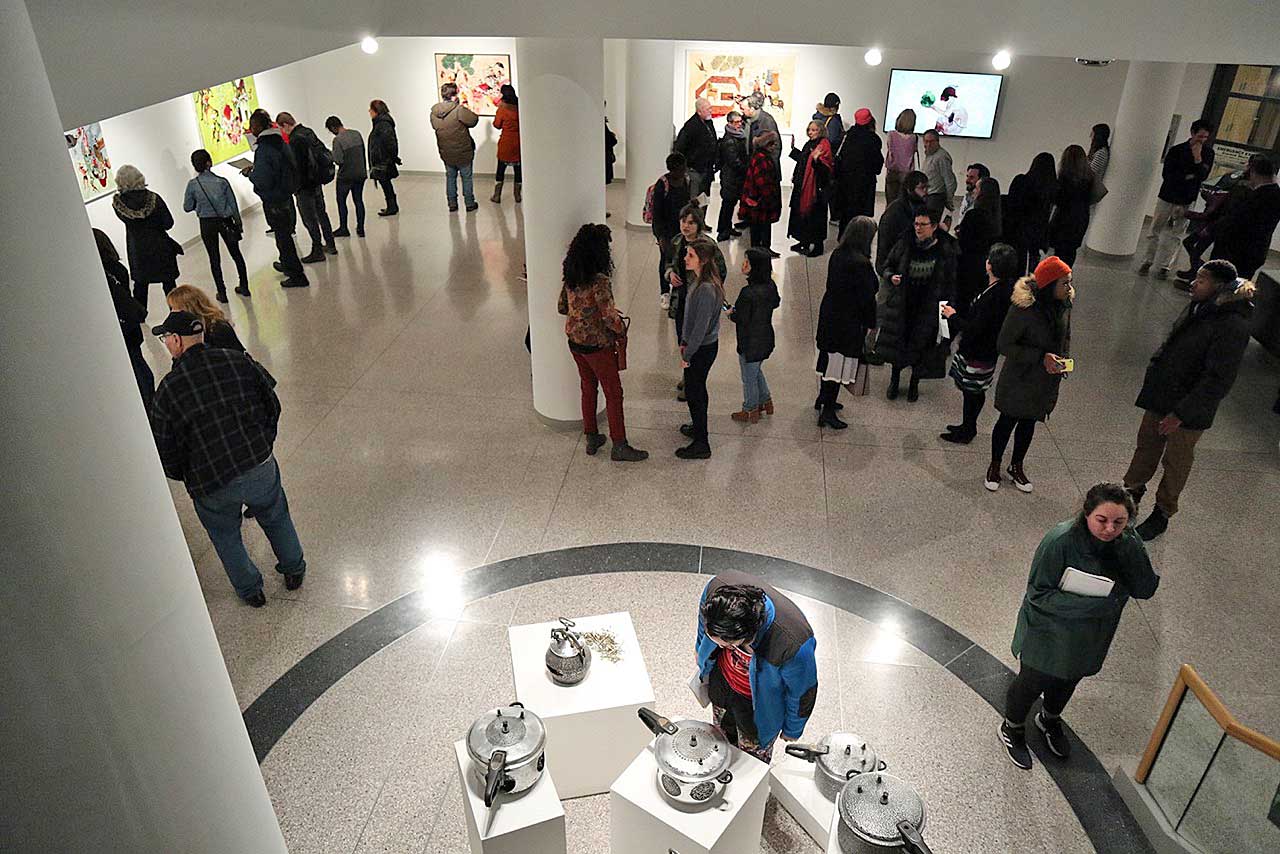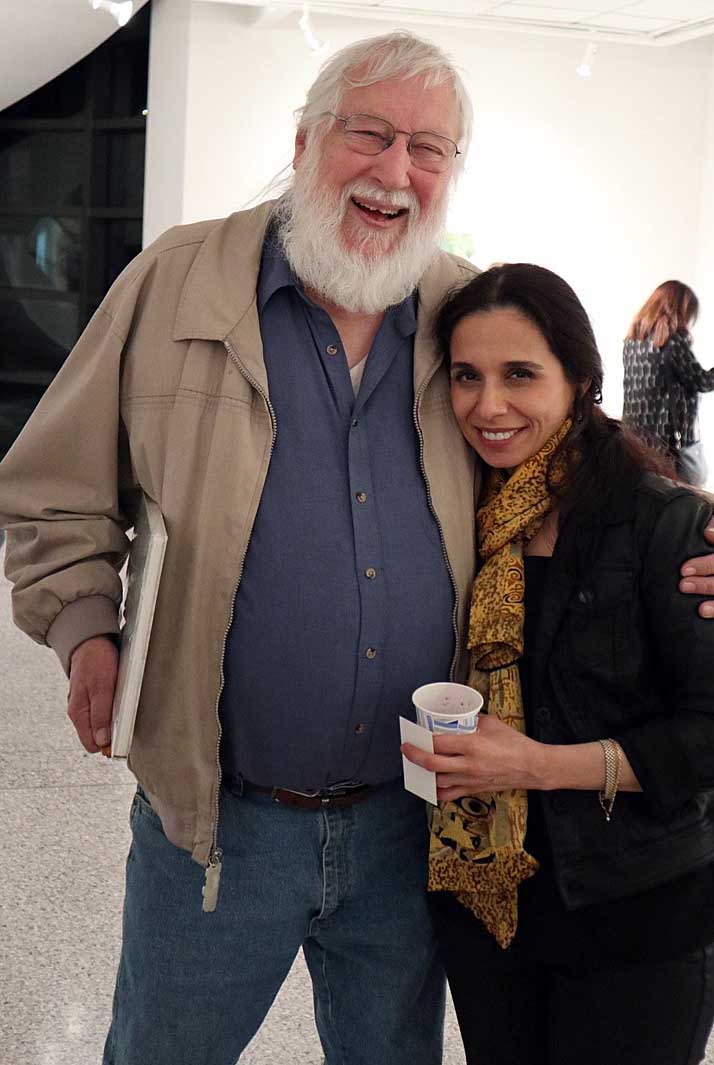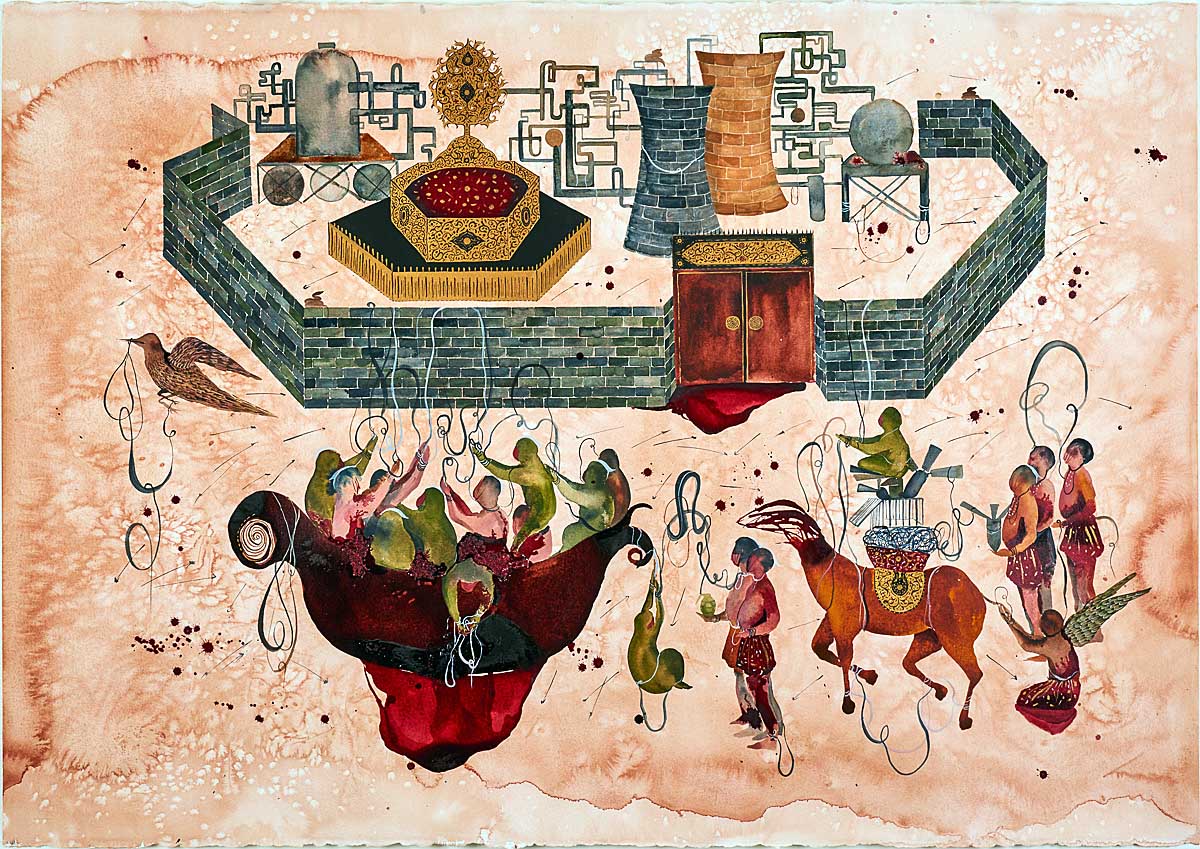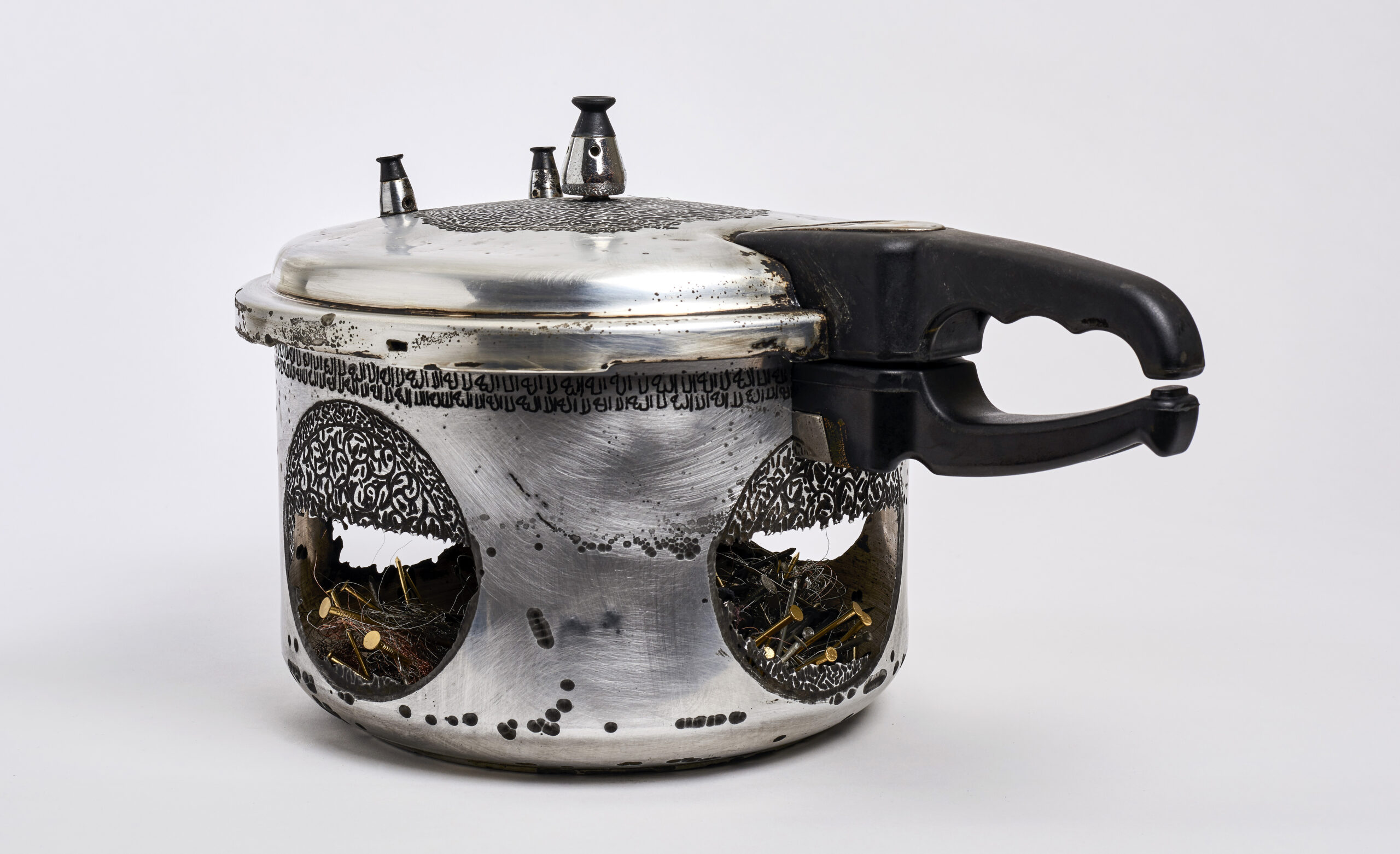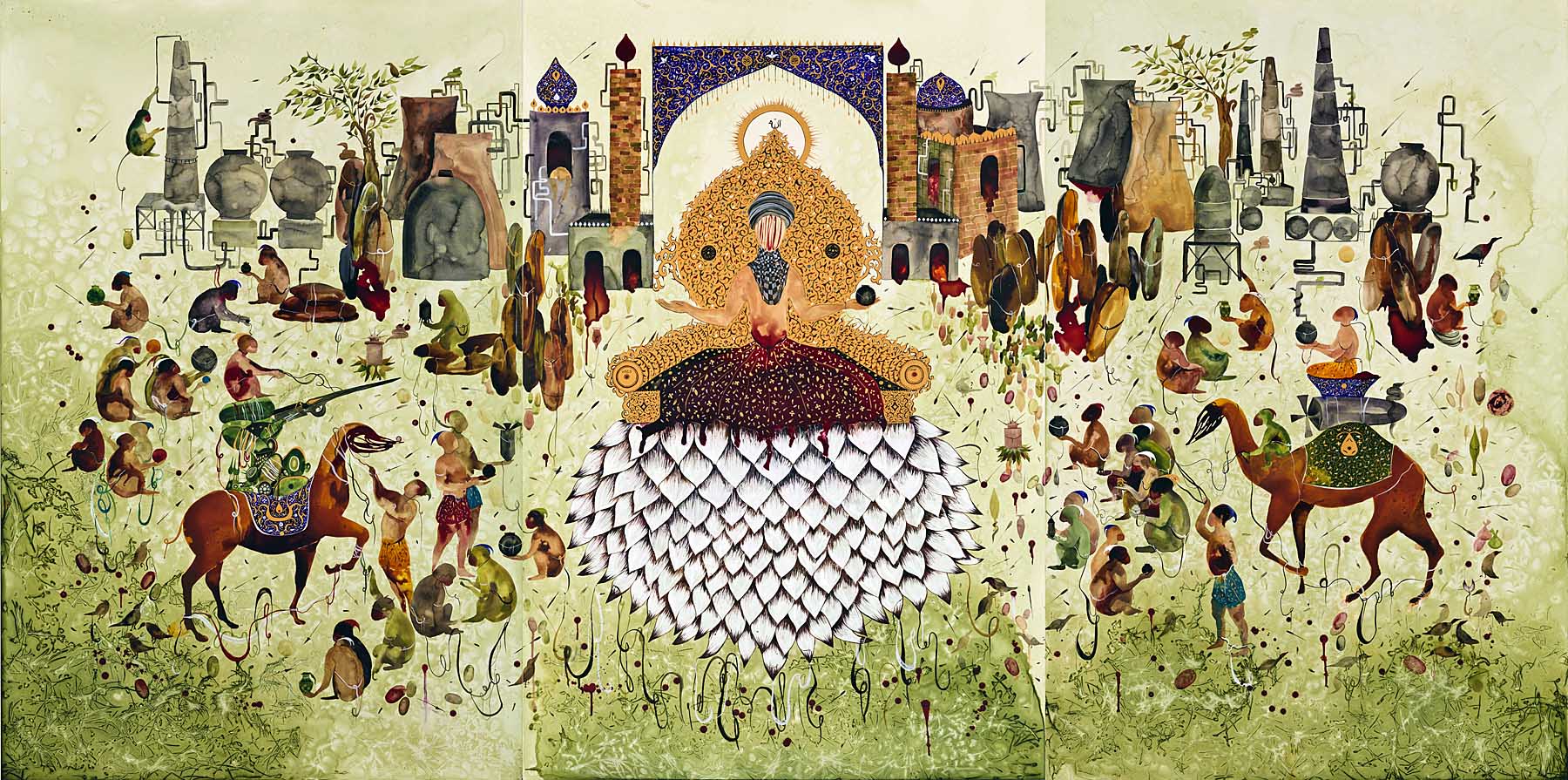
Installation image, Center for Art in Wood, 2020
A traveling exhibition from the Center for Art in Wood, based in Philadelphia, opened January 24, 2020 at the Marshall M. Fredericks Sculpture Museum with a selection of 70 objects that range in size from an egg to a motorcycle, and are extraordinarily rich in the variety of wood types. The works come from all parts of the globe and have been gathered for over a forty-year period. The decision to bring the touring exhibition to the MFSM was made by the now retired director Marilyn Wheaton two years ago and in addition to the Henry Luce Foundation, was made possible with support from the Michigan Council For Arts and Cultural Affairs.

Ted Hunter (Canada), Once Upon a Sandbank, Cherry, 1985
From the CAW museum’s collection of over 1,200 objects, this exhibition was curated by Andy McGivern who says in his statement, “Our dependence on – and love for – wood cannot be overstated. It’s integral to our very existence in a range of ways, encompassing our man-made environments as well as both utilitarian and decorative items. The organic qualities of wood, our ability to manipulate its shape, its abundance, and its renewable potential are among the reasons wood permeates our culture – including the art world. The seventy objects comprising Explorations in Wood are a small sample of the work held in the collection of Philadelphia’s Center for Art in Wood, gathered over a forty-year period.”
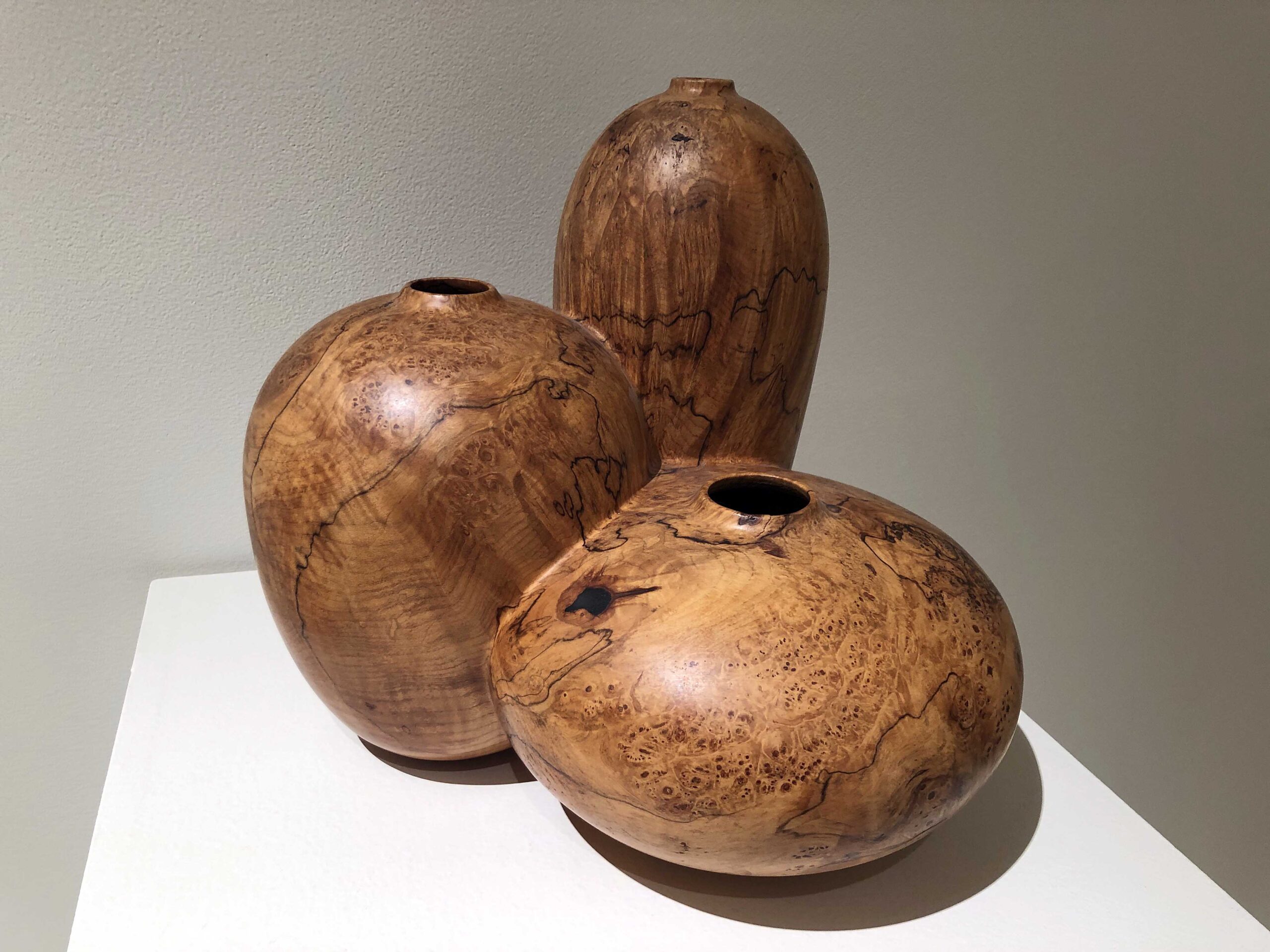
Hugh McKay (United States) Tripot #5, Spalted Maple, 1995
These works stem from a love of wood and display a rich variety of wood types. Processes are varied including wood-turned vessels as well as more sculptural forms. Many celebrate the natural beauty of wood, evident in rich warm-brown tones and assorted grain patterns, typical of materials gathered from around the globe.
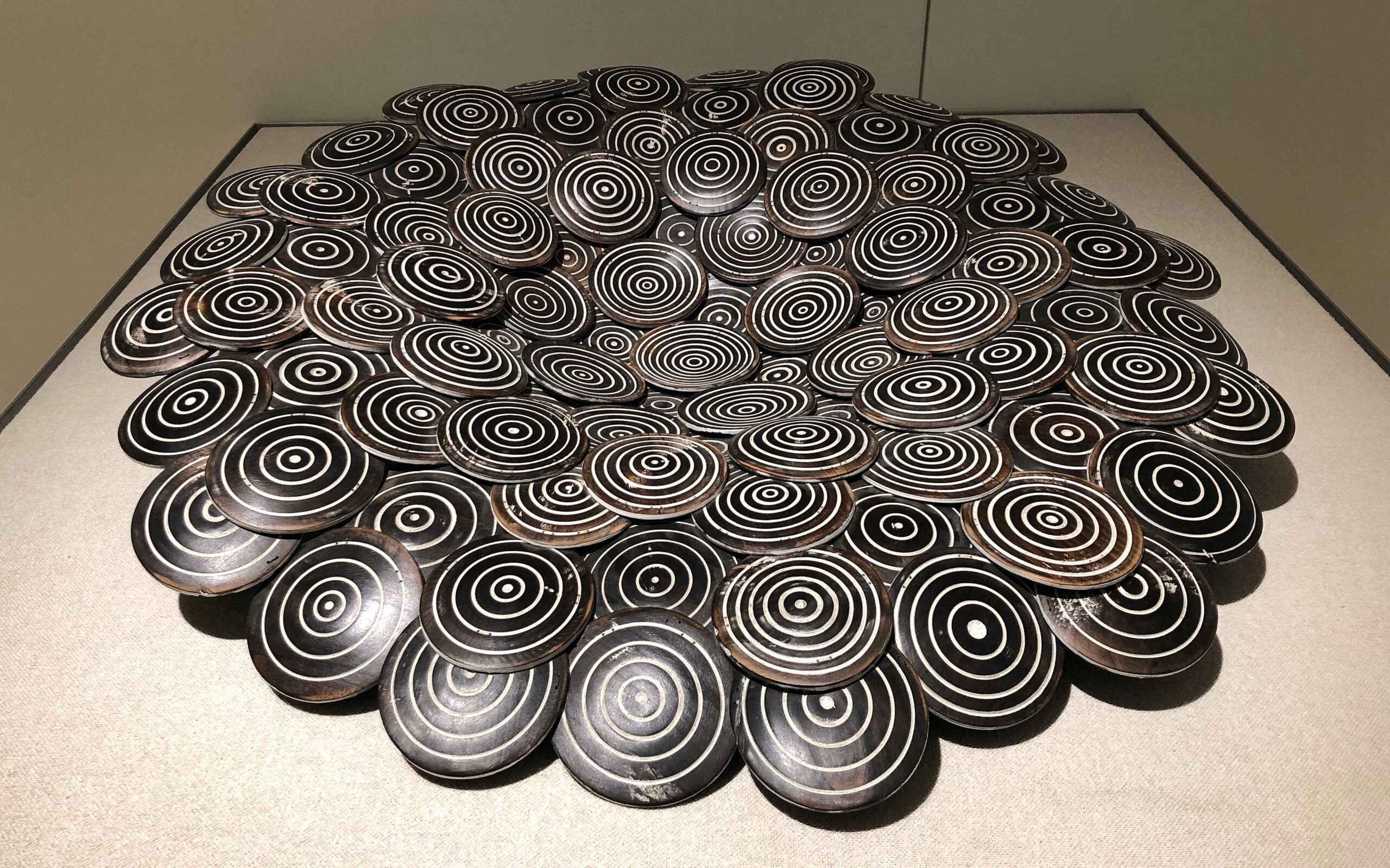
Carl R. Pittman (United States) Welcome to the New Paradigm, Silver Maple, white milk paint, waxed linen, steel wax, 2011
While many of the artworks might beg to be touched due to the enticingly tactile nature of wood, it’s the design and form of each that were the basis for selection. Variety and handling also were criteria, noting that some artists, after maximizing the manipulative qualities of wood then use paint to highlight an object’s form. Others combine multiple wood types, creating forms with contrasting colors or manipulating shapes to expose varied natural and machined textures. These approaches and others highlight the diversity and unlimited potential of wood.

Mark Bishop (Tasmania) Muti Layer Sphere I & II, Wood, bleach, dye, 1997
Little known to most, Dorothy Arbury of Midland, Michigan studied with the famous Marshall Fredericks when she attended Kingswood School when he was invited by Carl Milles to join the staffs of Cranbrook Academy of Art and Cranbrook and Kingswood School in Bloomfield Hills, Michigan. It was she and her husband who were on the founding Board of Control at Saginaw Valley College in 1965, and worked together to establish the fine arts facilities that included the Marshall M. Fredericks Sculpture Museum in 1988.
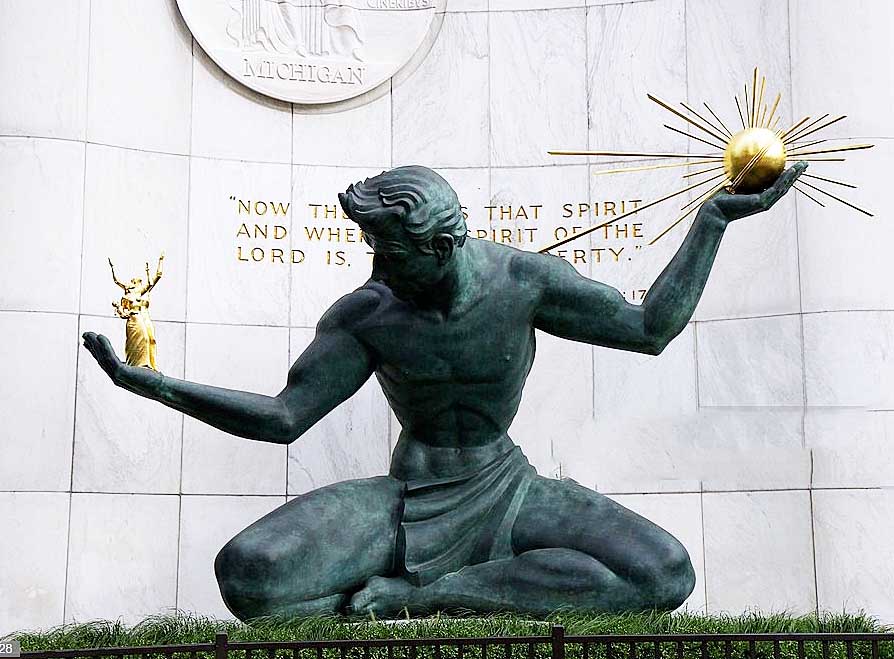
Marshall Fredericks’ “The Spirit Of Detroit” sculpture, sits in front of the Coleman A. Young Municipal Center, in Detroit, Michigan on JULY 21, 2012. (Photo By Raymond Boyd/Michael Ochs Archives/Getty Images)
The Marshall M. Fredericks Sculpture Museum is a free and open to the public museum which features a unique collection of more than two thousand objects that span the 70-year career of Detroit-based public sculptor Marshall M. Fredericks (1908-1998). He is known nationally and internationally for his impressive monumental figurative sculpture, public memorials, and fountains. Most Detroiters will immediately recognize the Spirit of Detroit by Marshall Fredericks without knowing the vast body of work that exists throughout Michigan and beyond. “To me, Sculpture is a wonderful and exciting thing, vital and all absorbing. I want more than anything in the world to do Sculpture which will have real meaning for other people and in some way inspire or give them happiness.”
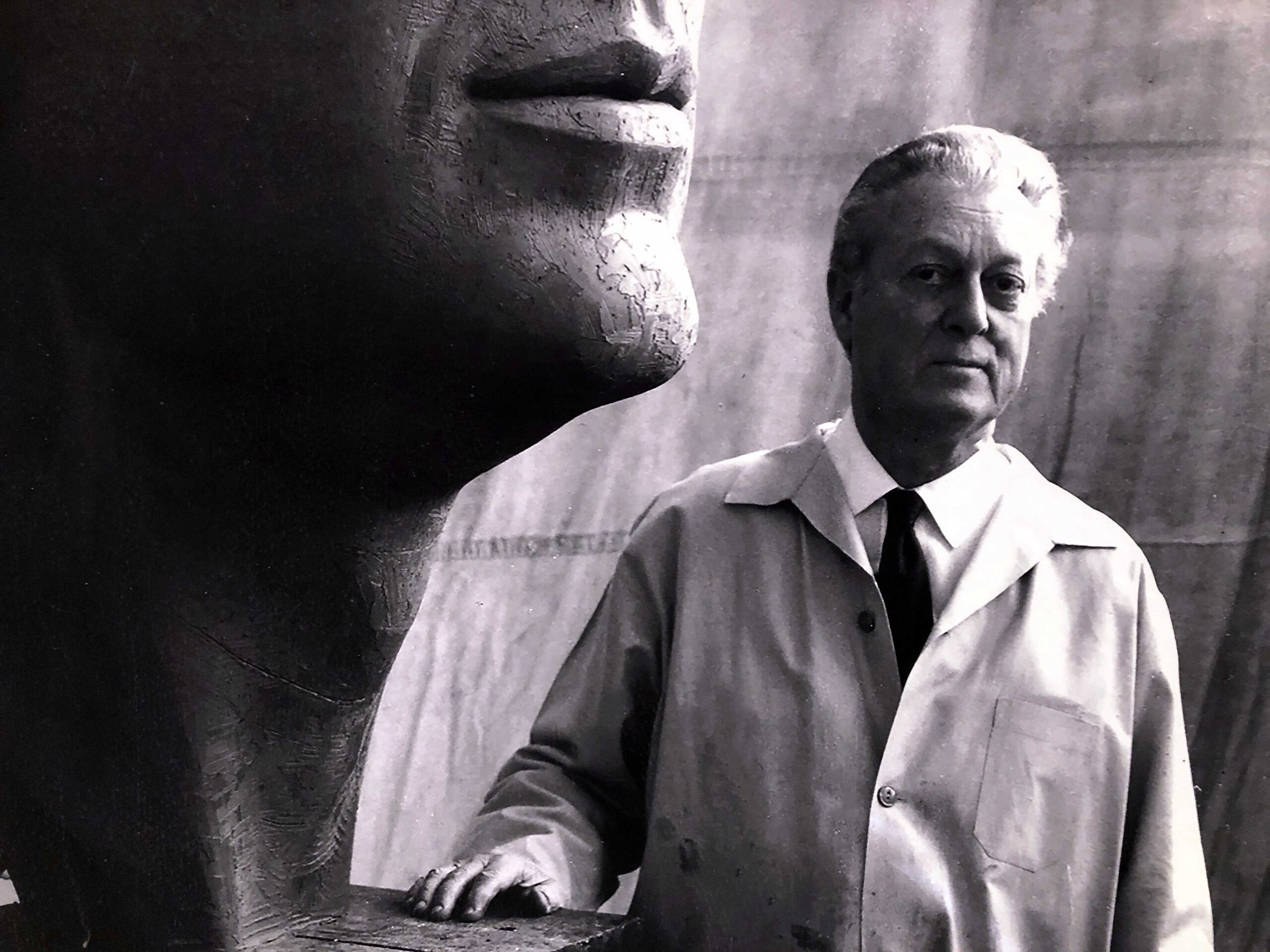
Sculpture Marshall Fredericks, standing next to clay model for his portrait of John F. Kennedy
Center for Art in Wood on exhibition through May 16, 2020
Hours: M-F 11:00 a.m. – 5:00 p.m., Saturday 12:00 – 5:00 p.m.
Marshall M. Fredericks Sculpture Museum, Saginaw Valley State University, 7400 Bay Road, Saginaw, MI


